Vietnam’s culinary landscape thrives in its streets, where centuries-old recipes and cooking techniques transform simple ingredients into extraordinary flavors. The country’s street food scene offers visitors an authentic taste of Vietnamese culture, with regional specialties reflecting local history, climate, and cultural influences from China, France, and neighboring Southeast Asian nations.
From steaming bowls of noodle soup served at dawn to sizzling pancakes folded around fresh herbs at midnight, Vietnam’s streets pulse with culinary energy at all hours. Here is a list of 15 exceptional street food destinations across Vietnam that showcase the country’s remarkable gastronomic heritage.
Hanoi’s Old Quarter
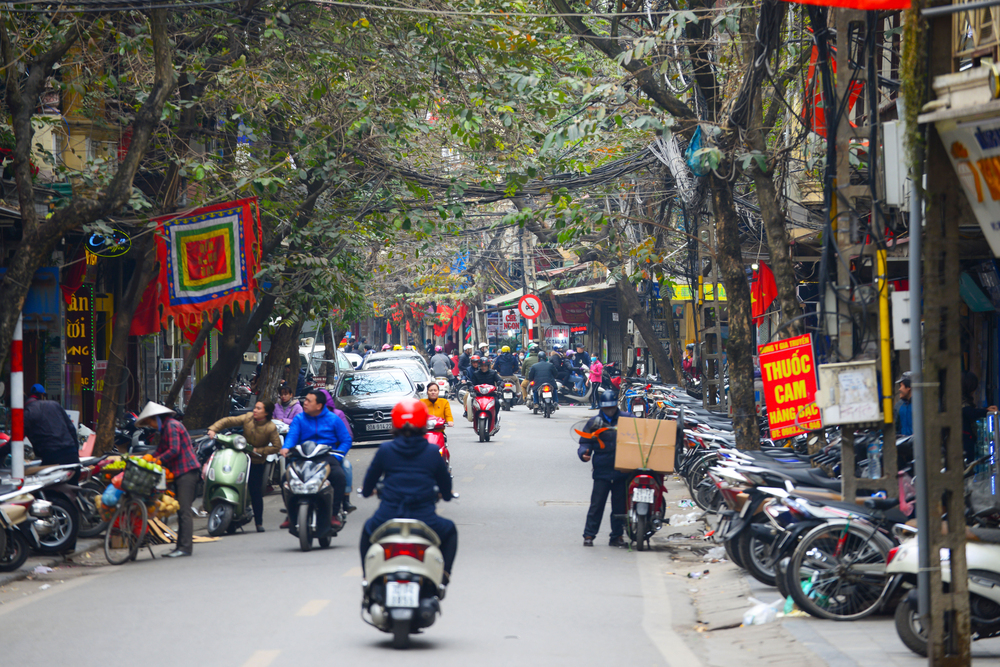
The ancient heart of Vietnam’s capital features narrow lanes packed with specialized food vendors, many families having sold the same dish from the same spot for generations. Tiny plastic stools crowd the sidewalks as locals and visitors hunch over steaming bowls of phở—the iconic beef noodle soup perfected in northern Vietnam with a clearer broth and fewer accompaniments than southern versions.
The Old Quarter’s most famous street food institution might be Bún Chả Hương Liên, where Anthony Bourdain and President Obama shared a meal of grilled pork with rice noodles, creating international recognition for this local favorite. Morning visitors shouldn’t miss the egg coffee at Café Giảng—a sweet, custard-like creation developed during milk shortages in the 1940s.
Ho Chi Minh City’s District 1
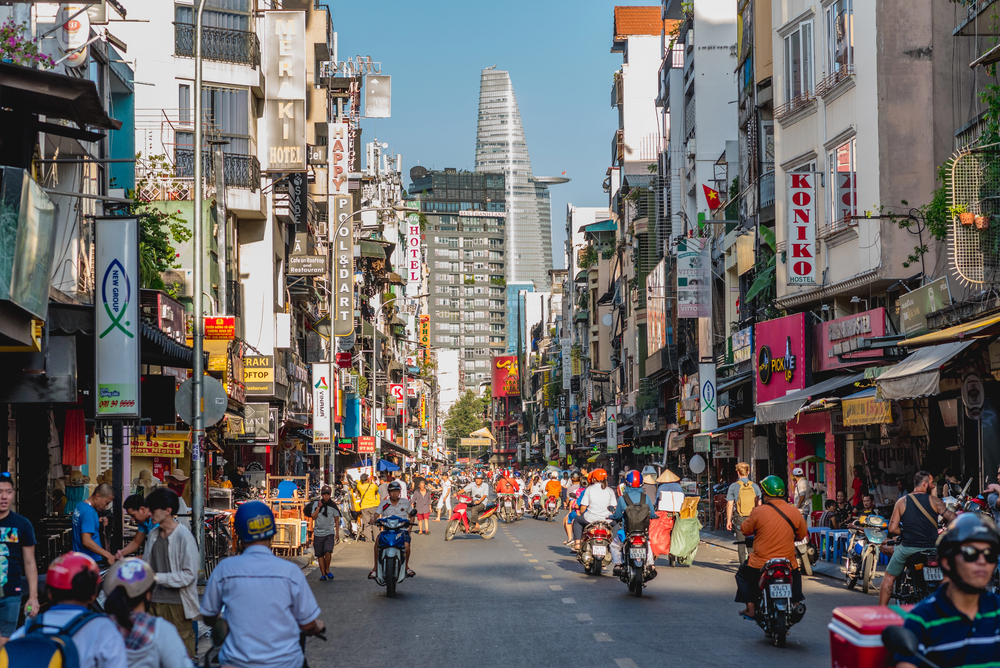
The central district of Vietnam’s southern metropolis offers modern street food experiences where traditional recipes meet contemporary presentation. The area around Bến Thành Market transforms each evening as vendors set up portable kitchens specializing in southern-style cuisine characterized by sweeter flavors and abundant fresh herbs. Seafood figures prominently in dishes like bánh khọt—crispy rice pancake cups topped with shrimp and green onion.
The streets around Nguyễn Văn Chiêm have been designated an official street food zone with improved hygiene standards and organized seating areas. Here, office workers and visitors enjoy cơm tấm—broken rice served with grilled pork, crispy egg cake, and pickled vegetables—a dish that transforms humble, broken rice grains into a beloved staple.
Like Travel Pug’s content? Follow us on MSN.
Hoi An Ancient Town
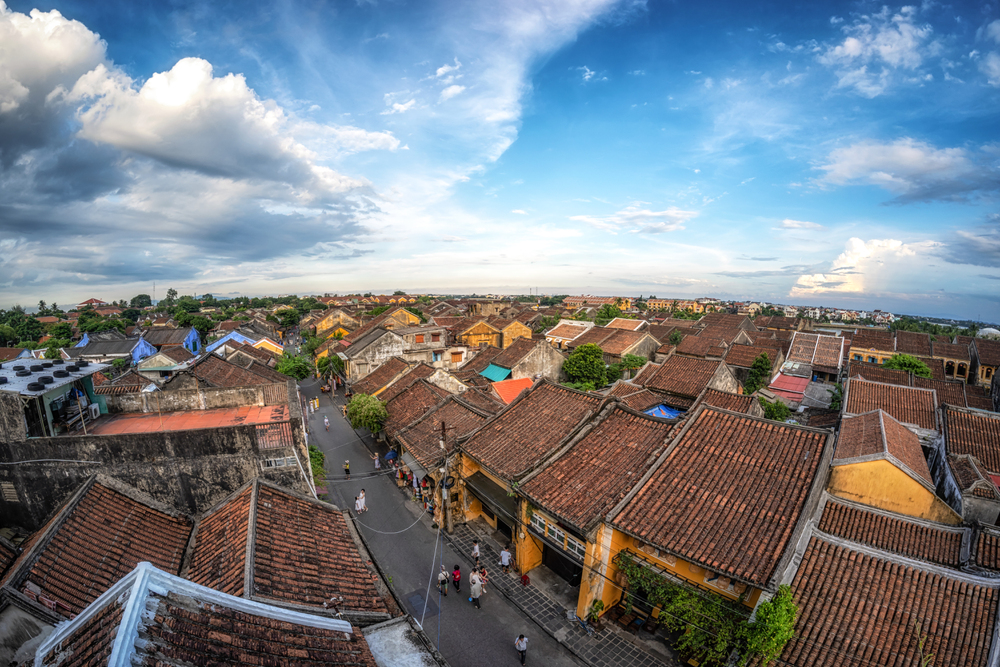
This UNESCO World Heritage site along Vietnam’s central coast boasts distinctive local specialties found nowhere else in the country. The riverside market and surrounding streets offer cao lầu—thick rice noodles with pork and greens that can be made authentically only with water from specific local wells and ash from a nearby island.
Another Hoi exclusive is mì Quảng—turmeric-infused rice noodles topped with shrimp, pork, quail eggs, and peanuts served with barely enough broth to coat the noodles rather than soup them. The town’s street food reflects its history as a trading port, incorporating influences from Chinese merchants and Japanese settlers who lived here centuries ago.
Hue Imperial City
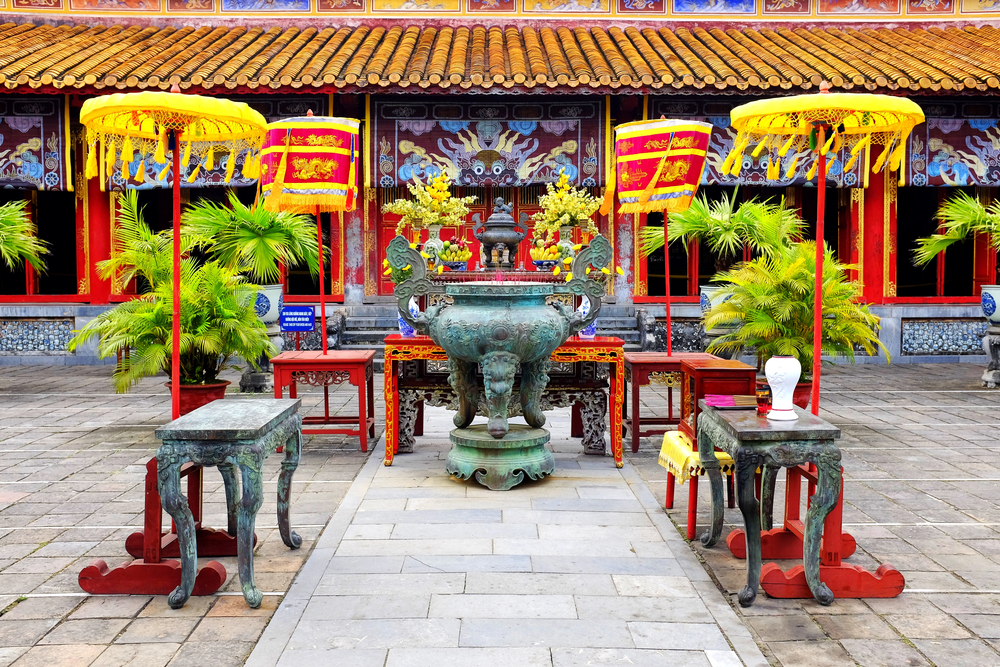
The former royal capital maintains culinary traditions developed to please emperors, now available from street vendors throughout the city. Complex flavor combinations distinguish Hue cuisine, with subtle blends of spices reflecting the sophisticated tastes of the Nguyen Dynasty court. The city specializes in elaborate small plates like bánh bèo—steamed rice cakes topped with dried shrimp, crispy pork skin, and scallion oil, served in tiny dishes about the size of a silver dollar.
Bún bò Huế dominates morning street food scenes with its spicy lemongrass beef broth, thick rice noodles, and distinctive cube of congealed pig blood that provides rich depth to the soup. The streets around Đông Ba Market offer the greatest concentration of authentic imperial street cuisine.
Nha Trang Beachfront
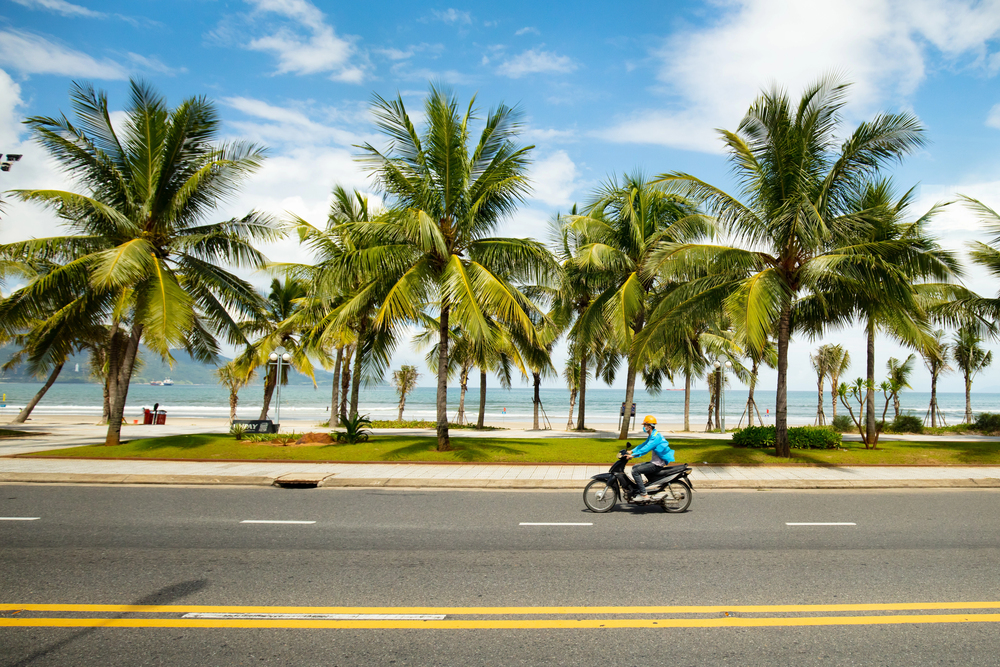
This coastal city combines fresh seafood with street food convenience along its popular beach promenade. Vendors wheel portable grills onto the sand each evening, cooking the day’s catch to order with minimal seasoning to highlight the natural flavors. The area specializes in bún cá—fish noodle soup featuring local mackerel or tuna in a light broth flavored with dill and green onion.
Another beachfront favorite is bánh căn—savory rice cakes cooked in special clay molds over charcoal, then topped with quail eggs, shrimp, or squid. The night market along Trần Phú Street offers the most concentrated street food experience, where visitors dine at makeshift tables while watching the South China Sea.
Like Travel Pug’s content? Follow us on MSN.
Da Lat Night Market
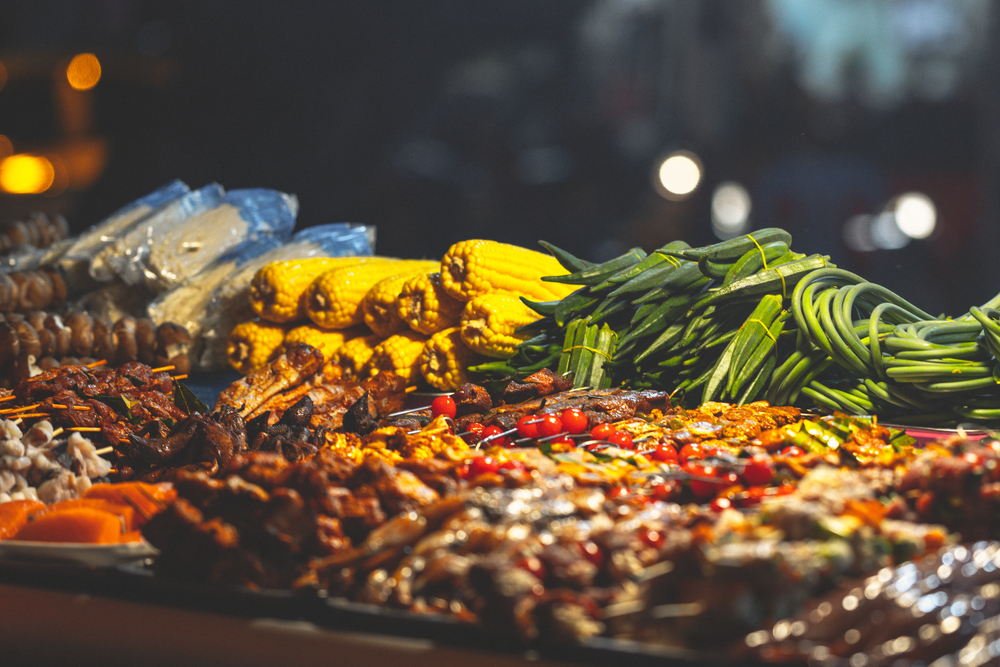
The highland city’s cooler climate supports unique street foods not found elsewhere in Vietnam. The night market centered on Nguyễn Thị Minh Khai Street features dozens of vendors selling mountain specialties like bánh tráng nướng—grilled rice paper topped with quail eggs, green onions, dried shrimp, and chilies, often called ‘Vietnamese pizza.’
The region’s abundant strawberries and avocados appear in sweet street treats and smoothies, while artichoke tea reflects French colonial influence in this former hill station. The market’s food section buzzes until midnight, with portable charcoal stoves warming visitors in the highland evening chill while cooking regional dishes developed for cooler temperatures.
Hai Phong Marina

This major port city northeast of Hanoi offers distinctive street food along its busy waterfront. The area specializes in bánh đa cua—a noodle soup made with broad, red-brown rice noodles in a rich crab broth that reflects the city’s maritime heritage. Street vendors near the ferry terminal serve nem cua bể—fried spring rolls filled with local crabmeat, mushrooms, and vermicelli, distinguished by their extra-crispy texture and served wrapped in lettuce with herbs.
The streets around Tam Bạc Market feature the city’s signature dish, cánh gà chiên mắm—chicken wings marinated in fish sauce before frying, resulting in an umami-rich caramelized exterior that’s become famous throughout northern Vietnam.
Can Tho Floating Markets
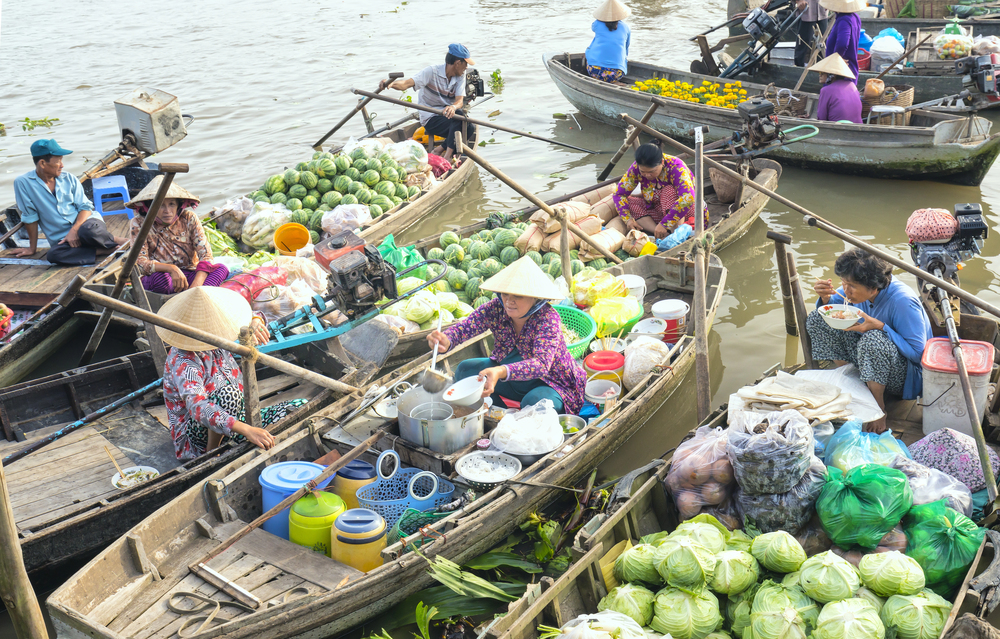
The Mekong Delta’s largest city centers around waterways where floating vendors have traded goods for centuries. The most authentic street food experience here actually happens on the water at Cai Rang Floating Market, where boat vendors suspend sample items from tall wooden poles so customers can spot them from a distance. Boats sell hủ tiếu—a southern noodle soup with clear broth and multiple toppings that reflect Chinese influence in the region.
The riverbank markets specialize in bánh cống—deep-fried balls of mung bean paste surrounding whole shrimp, served with raw vegetables and sweet-sour dipping sauce. The delta’s abundant fruit appears in creative street desserts like chè—sweet soups combining coconut milk with tropical fruits and jellies.
Like Travel Pug’s content? Follow us on MSN.
Sapa Terraces
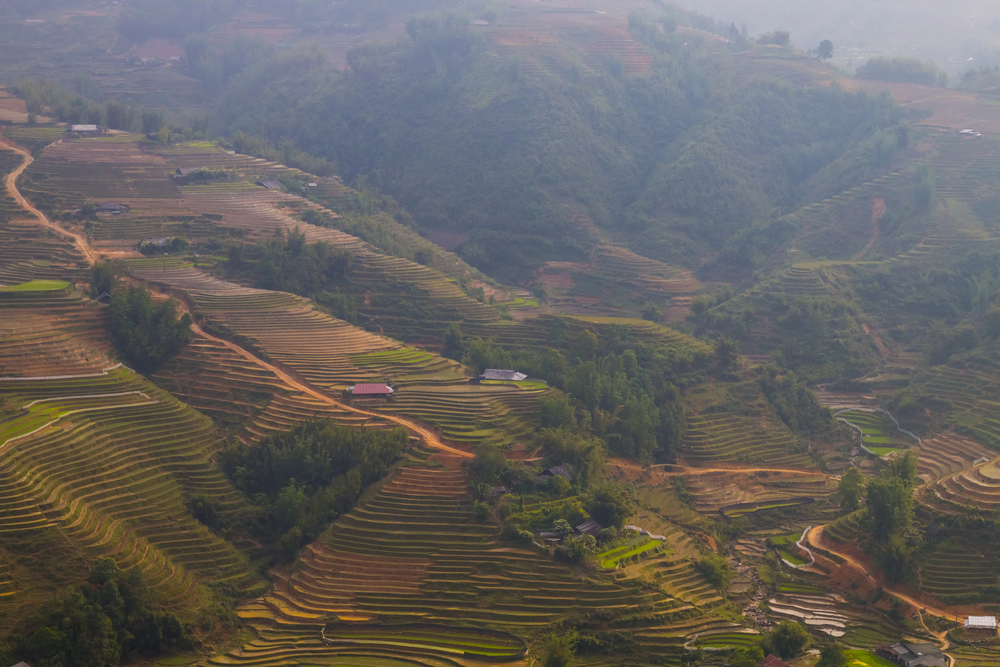
This northern mountain town near the Chinese border offers street food influenced by the ethnic minorities who have farmed the surrounding terraced hillsides for centuries. The central market features H’mong and Red Dao vendors selling thắng cố—a hearty horse meat soup containing various organs slow-cooked with mountain herbs and spices, traditionally served during special occasions but now available daily to visitors.
The town’s main street transforms each evening as vendors set up charcoal grills for salmon from local mountain streams served with foraged wild vegetables and herbs unique to the highland ecosystem. Rice wine from surrounding villages accompanies most meals, often infused with medicinal plants gathered from mountain forests.
Phu Quoc Night Market
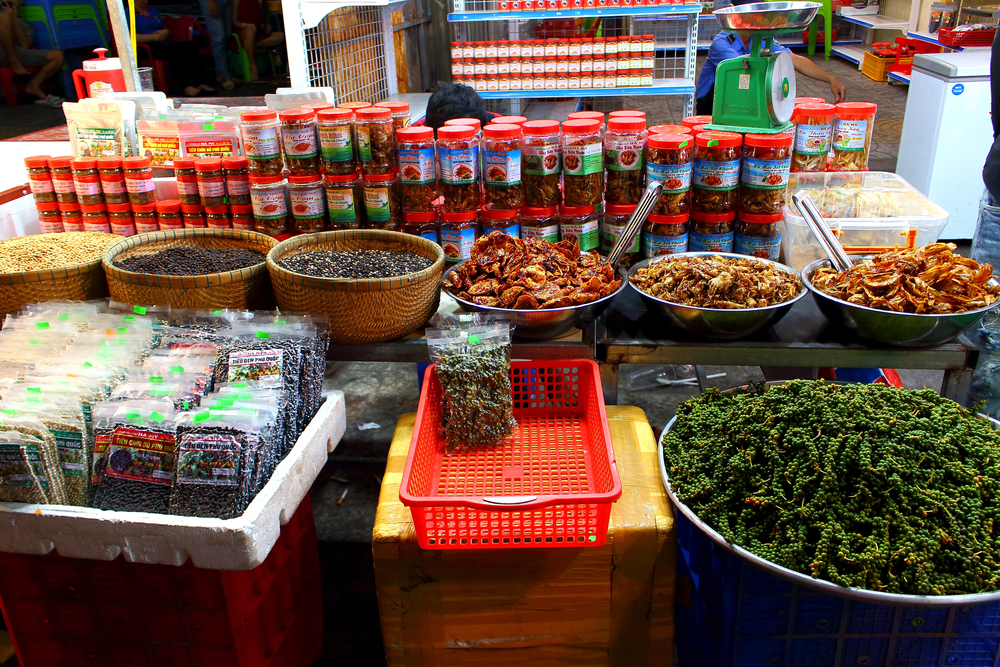
Vietnam’s largest island specializes in seafood at its famous Dinh Cau Night Market, where the day’s catch is displayed live in tanks before being prepared to order. The island’s signature dish is bún quậy—a noodle soup featuring locally caught shrimp and squid in a rich broth made from the heads and shells, served with distinctive thin vermicelli made on the island. Vendors specialize in nướng—various grilling techniques that caramelize the natural sugars in fresh seafood while adding smoky flavor.
The market’s busiest section offers fish sauce tastings, showcasing the island’s premier export with samples of different aging periods alongside dishes that highlight the condiment Phu Quoc has become internationally known for producing.
Buon Ma Thuot Coffee Street

The capital of Vietnam’s central highlands and the heart of the country’s coffee industry celebrates its most famous product with a street dedicated entirely to coffee vendors. Trường Chinh Street features dozens of sidewalk cafés serving regional coffee prepared in the traditional Vietnamese style—dripped slowly through individual metal filters atop glasses containing sweetened condensed milk.
The area specializes in rare varieties like civet coffee (cà phê chồn), made from beans partially digested by civets whose enzymes create uniquely smooth flavors. Street vendors serve coffee alongside local specialties like bánh mì rau rừng—sandwiches filled with wild vegetables foraged from surrounding forests, reflecting the culinary traditions of the Ede people indigenous to the region.
Like Travel Pug’s content? Follow us on MSN.
Ha Long Bay Fishing Villages
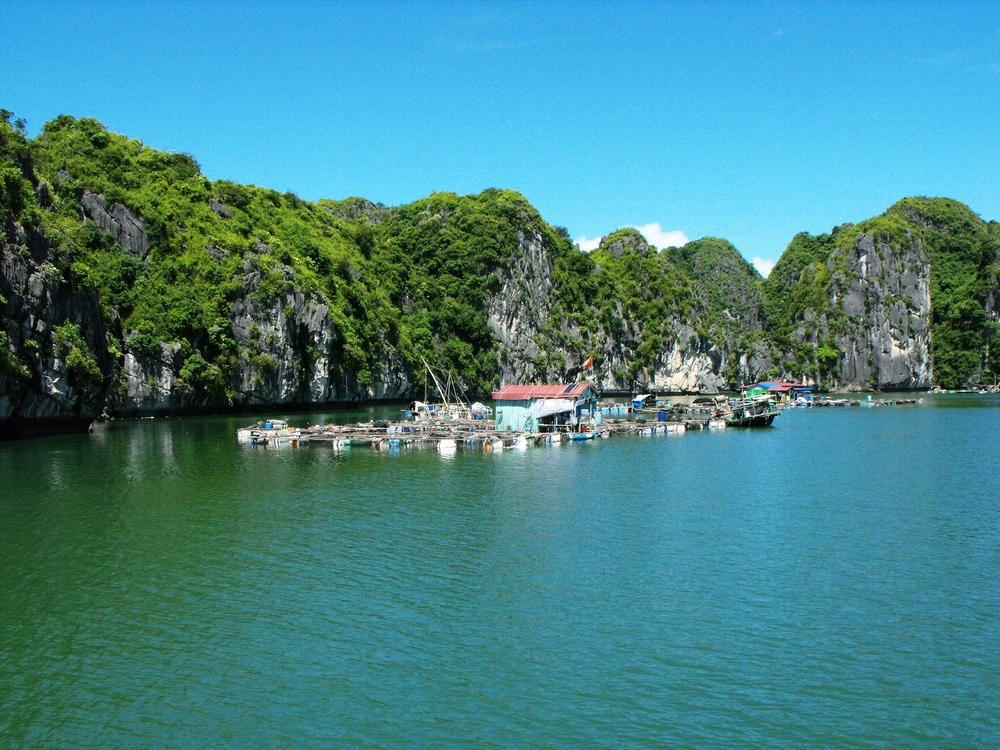
The UNESCO World Heritage site features floating communities where seafood specialties are prepared on boat decks and small piers extending from limestone karsts. The area specializes in chả mực—squid patties pounded by hand until they develop a distinctive bouncy texture before being grilled over charcoal braziers.
Fishing families serve the day’s catch prepared minutes after leaving the water, often accompanied by simple garlic and chili dipping sauces that highlight the exceptional freshness. The floating village of Cửa Vạn offers the most authentic experience, where generations-old family recipes transform local sea snails, clams, and fish into dishes served directly from cooking boats to diners seated on adjacent floating platforms.
Kon Tum Highlands
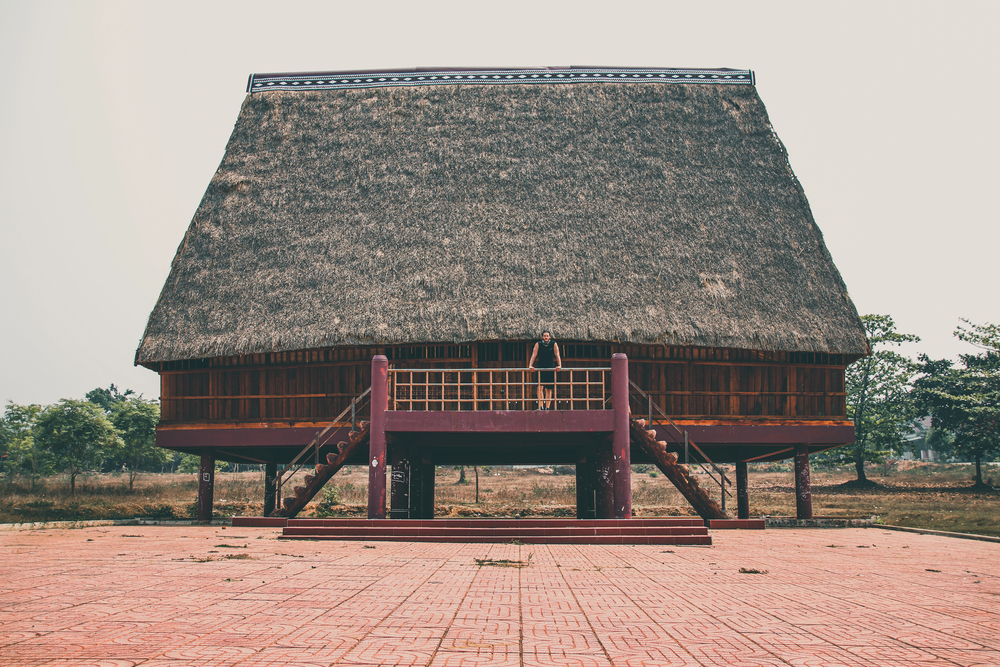
This central highland province bordering Laos and Cambodia offers street food influenced by the indigenous Jarai and Bahnar peoples, who comprise much of the local population. The night market along Bạch Đằng Street specializes in dishes featuring wild ingredients from surrounding forests and mountains.
Grilled meats wrapped in wild betel leaves impart a peppery flavor, while bamboo tubes filled with sticky rice and beans are cooked directly in streetside fires. The region’s specialty is cơm lam—rice cooked inside bamboo sections over open flames, infusing the grains with a distinctive aroma before being served with grilled wild boar or chicken. Indigenous fermentation techniques create unique flavors in dishes not found elsewhere in Vietnam.
Chau Doc Riverside

This Mekong Delta town near the Cambodian border offers street food reflecting its diverse population of ethnic Vietnamese, Khmer, Cham, and Chinese residents. The riverfront night market specializes in lẩu mắm—a distinctive fermented fish hot pot where diners cook fresh vegetables and meats in a rich broth centered around the region’s famous fermented fish paste.
Muslim Cham vendors serve unique halal Vietnamese dishes like bún kèn—rice vermicelli topped with a curry-like coconut fish sauce reflecting centuries of trade with Indonesia and Malaysia. The town’s signature breakfast is bún nước lèo—a fish noodle soup featuring the local specialty of snakehead fish in a complex broth flavored with fermented bamboo shoots and prairie paddy herbs.
Like Travel Pug’s content? Follow us on MSN.
My Tho Mekong Gateway
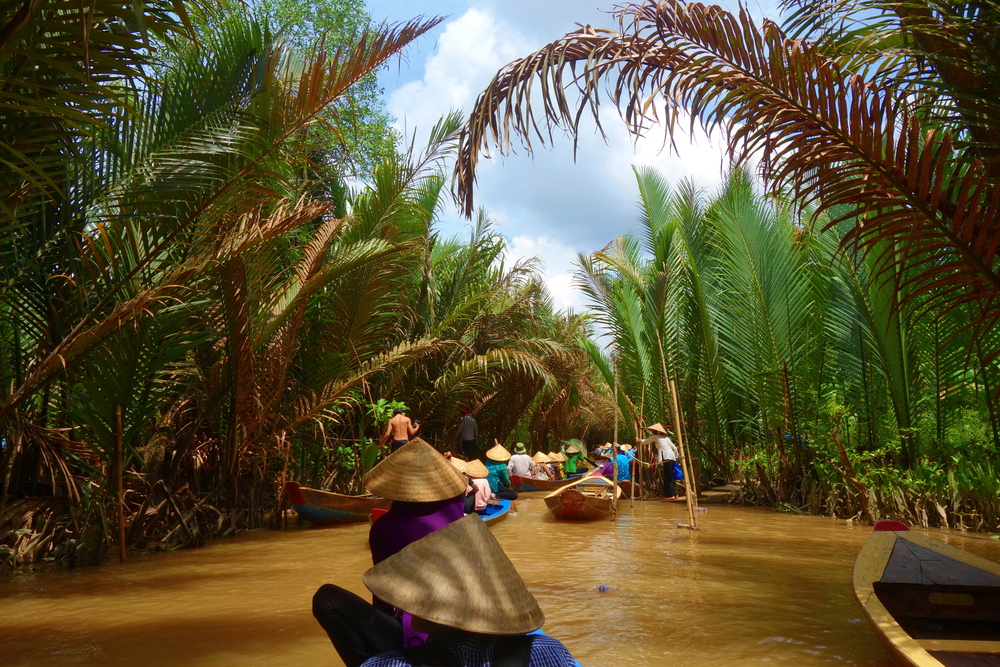
This delta city serves as the gateway to the Mekong region, offering street food specializing in the area’s abundant fresh produce and river fish. The central market features vendors selling hủ tiếu Mỹ Tho—the local variation of the southern clear noodle soup distinguished by the addition of pork organs and river prawns.
The streets surrounding the market specialize in bánh xèo—sizzling rice flour pancakes the size of dinner plates, filled with bean sprouts, pork, and shrimp, then folded and served with baskets of fresh herbs and lettuce for wrapping. Visitors shouldn’t miss the area’s famous dragon fruit, often served as streetside smoothies blended with condensed milk and crushed ice, creating vibrant pink drinks that cool patrons in the delta heat.
Flavors That Tell Stories

Vietnam’s street food transcends mere sustenance—it represents living history, with each dish telling stories of cultural resilience, regional pride, and family tradition. Recipes passed through generations preserve techniques that predate written records while incorporating new influences as the country continues evolving.
The most authentic Vietnamese culinary experiences happen not in fancy restaurants but on plastic stools at sidewalk stalls, where cooks and customers connect directly over steaming bowls and sizzling woks. These humble street corners serve as Vietnam’s true culinary masterpieces—living museums where flavor and heritage merge with each fragrant bite.
More from Travel Pug

- Cities Growing so Fast You Won’t Recognize Them in 10 Years
- 13 Destinations Where Tourists Regularly Regret Their Trip
- 16 U.S. Cities That Are Quietly Becoming Travel Hotspots
- Where to Travel If You Love Long Bus Rides and Daydreams
- 20 Cities Perfect for Solo Travelers Who Crave Adventure & Culture
Like Travel Pug’s content? Follow us on MSN.
